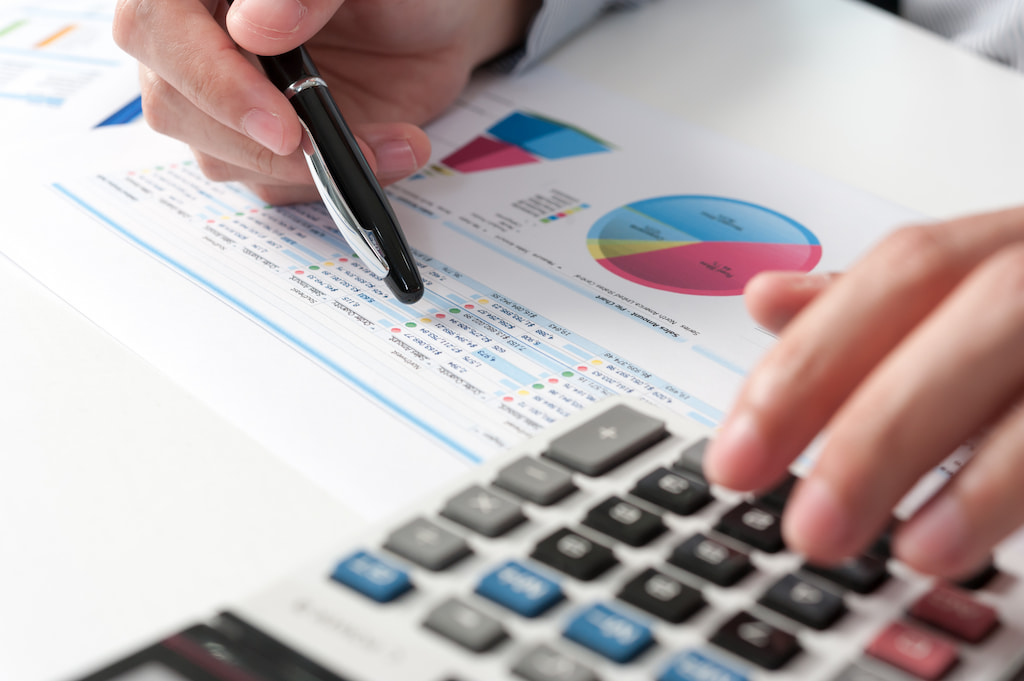Valuing your small business is helpful in many scenarios, but how to determine the value of a small business? There are many different methods to consider.
_
Small business owners work tirelessly to turn a dream into a reality. Along the way, they put all of their financial eggs into one basket which threatens their financial stability if the company goes belly up. And what about the sacrifices they make on the personal, family, and health fronts?
How to value a business goes beyond the daily operations. Even if you aren’t thinking of selling your business any time soon (or at all), it’s still important to consider the freedom point, or the dollar amount that you’d feel comfortable selling your business. This is where our financial advising for small businesses can help.
Why You Might Need to Value Your Business
In reality, most business owners have a company valuation in their heads that is far higher than what they could get for their business. Even if you’re not looking to sell your business at any point in the foreseeable future, understanding what your business is worth can help you with many different facets of your company:
- Tax-planning and legal reasons;
- Securing future investments as investors will want to see a real business value in any deal that you present to them;
- Business growth and development as annual investments help secure additional funding and show you areas where you can improve;
- Setting a fair price for employees in case they want to purchase or sell shares in your company;
- You want to better understand how your business is growing;
- You’re hoping to buy out other business owners or bring in additional business owners.
At a certain point, it’s time to stop chasing every dollar of revenue and profit and time to start focusing on business owner math. By this, we mean focusing on multiples rather than adding and subtracting business value. If you strive to grow your business value as a whole, profit will naturally be a byproduct of your efforts.
Small Business Valuation Methods

It’s clear that valuing your small business is helpful in many scenarios, but what about how to determine the value of a small business? There are many different methods to consider each with its pros and cons. We’ve outlined some popular methods below.
Capitalization of Cash Flow (CCF) Method
This is one of the most utilized methods of how to value a business and is a helpful example of a cash flow projection tool. In the capitalization of cash flow (CCF) business valuation method, simply divide the cash flow from a specific time period by a capitalization rate. Make sure to use only one period’s worth of recurring, sustainable cash flow. If there were recent one-off purchases or transactions that you want to keep from the results, you’ll need to make adjustments accordingly.
The capitalization rate, or cap rate, is the business’ expected rate of return, or the rate of return that the business buyer can expect to earn. This number is excluding salary and is often anywhere from 20-25% for small businesses.
While there are benefits to using the CCF method when valuing your small business, know that its simplicity can impact how accurate it is. If you’re a brand new company that has inconsistent cash flow thus far, it might not be the best method to use. On the other hand, if you’re a mature and stable company looking to determine its value and you don’t see huge swings in cash flow, the CCF method can prove a beneficial option.
Discounted Cash Flow (DCF) Method
In the discounted cash flow (DCF) method of valuing your business, the acquirer “buys” future income discounted for risk. This discount rate is influenced by internal factors such as owner dependency in addition to external factors such as overall stability and interest rates. It uses the company’s projected cash flow and the time value of money to determine how much a business is worth. As we mentioned above, the CCF is ideal for companies that have a steady flow of cash, but the DCF method is ideal for companies that will likely grow or shrink a significant amount in the upcoming years.
This small business valuation method factors in the time value of money. This is the idea that today’s money is worth more than it will be in the future. For example, let’s say you have $500 to spend. You can either invest the money and have it earn interest to make more money over the next few years. The DCF method takes this into consideration, another reason that it’s helpful if you’re weighing investment opportunities.
Turn to the business’s cash flow statement as a starting point. You can also factor in projected cash flows if you have them. You’ll need to know the weighted average cost of capital (WACC) which may require complicated calculations. It’s also necessary to determine how many years of cash flows to include. Consider basing your answer on how confident you are about future cash flow projections and make sure to use the same number of years when comparing DCFs for more than one investment.
Asset Valuation Method

Another way to determine the value of a small business is asset-driven. This method calculates the difference in price between business assets such as property, equipment, inventory, and intangible assets that are adjusted to fair market values. Asset valuations are helpful for internal use and can provide insight into how you’re spending your money.
Start this process by listing your assets and giving them a monetary value. If you’re factoring in equipment, make sure that you assign a value between the sale price and how much it has depreciated. When in doubt, estimate how much you’d sell the equipment for today.
This method is beneficial to business owners as many of them are very familiar with equipment and production costs. This means the estimates are accurate and will provide you with an accurate ballpark estimate of how much your company is worth. This is an ideal method if your business holds its value in investments or real estate or if you’re hoping to liquidate in the future. Potential buyers will always be interested in the value of your investments or equipment.
Market-Based Valuation Method
Think of this business valuation method in the same way that you think of listing a home. If there are two homes in the same neighborhood that have the same square footage and features, a realtor can use the home that just sold to determine the listing price for the other property. In the case of market-based evaluation, an acquirer arrives at a value by comparing a business with companies of a similar size and industry that have sold recently.
This approach to how to value a company is more about the market conditions than the specific business. If you’re a small company, it can be challenging to find relevant comps, particularly if you’re in a niche industry. Many professional appraisers also have databases with relevant findings that can shed light on how much you’d be able to sell your company for. These comps don’t necessarily need to have physical locations close to your office to be helpful. Many business owners also use the market-based valuation method in tandem with other methods to determine an accurate value.
What Is the Best Way to Value Your Business?

Take a step back and consider what drives value in your business. We’ve outlined eight general categories that can help you work toward your business freedom point or the price that you’d need to sell your company for your income to be replaced.
- Financial performance – how do your financials look?
- Growth potential – is the industry itself moving up and does the business have a proven track record?
- Over concentration issues – Are you relying too heavily on the same employees, vendors, or clients to keep your business afloat?
- Speed of cash – Can we grow from the cash we have or are we fronting the costs?
- Hierarchy of recurring revenue – Are your products or services findable anywhere?
- Customer satisfaction – Are customers happy with our products or services?
- Owner dependence – Could the company run smoothly if the owner stepped away?
Each valuation method could produce slightly different results, so it’s always a good idea to try more than one approach to see how similar your findings are.
The Bottom Line
Even if you aren’t currently thinking about selling your small business, it’s helpful to understand how to determine its value and at what point you’d feel comfortable selling. The more you focus on building your business’s value, the less you’ll have to worry about profit. If you need guidance on how to determine the value of a small business or you’re interested in learning more about how we can help, take advantage of our free advising session!




